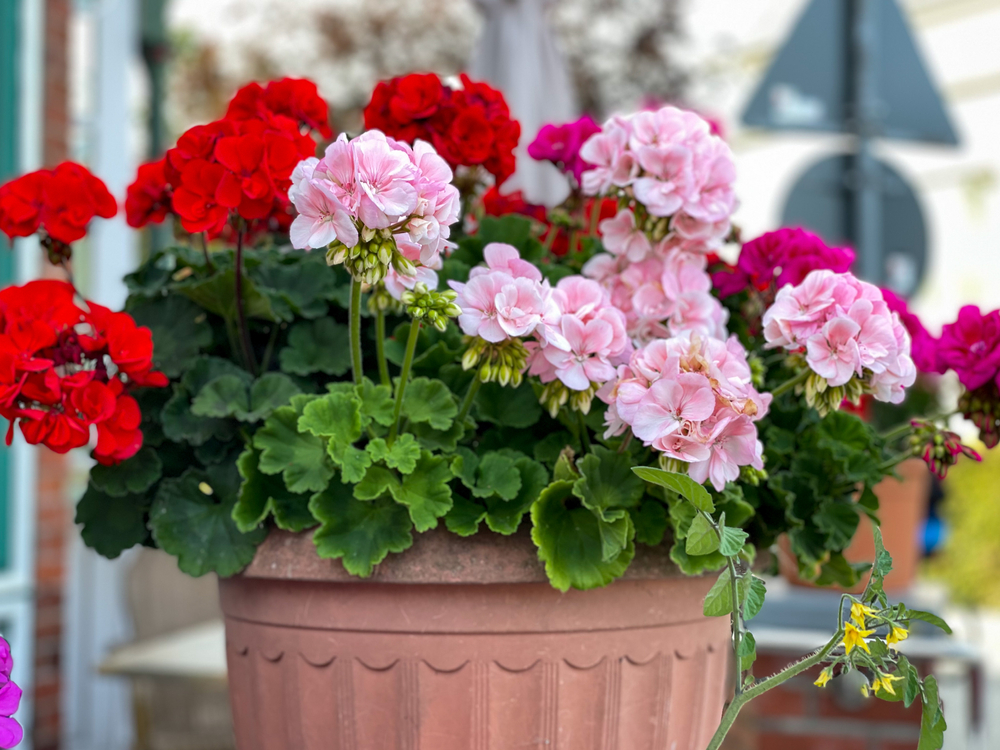
Given Calgary’s current restrictions, where watering outdoor flower gardens and pots is prohibited, it’s crucial to employ methods that help your annuals survive without direct watering.
Here are some tips to help your potted plants endure these tough conditions:
Tips for Helping Annuals in Pots Survive Without Watering
1. Collect Rainwater:
Rain Barrels: Set up rain barrels to collect and store rainwater from your roof. Even during dry periods, sporadic rain can provide a significant amount of water for your plants.
Rain Chains and Diverters: Use rain chains or gutter diverters to direct water from your roof to storage containers.
Rainwater Collection Supplies: Local gardening stores or home improvement centers often sell rain barrels and other water collection systems.
2. Optimize Pot Placement:
Shade: Move pots to shaded areas, especially during the hottest parts of the day. This reduces water loss through evaporation and helps the soil retain moisture longer.
Shelter: Place pots in protected areas to shield them from drying winds which can accelerate moisture loss.
3. Use Mulch to Retain Moisture:
Apply a thick layer of mulch on the soil surface in your pots. Materials like straw, bark chips, or even pebbles can significantly reduce water evaporation and help keep the soil cooler.
Mulch also helps suppress weeds that compete for moisture.
4. Plant in the Ground Versus Pots
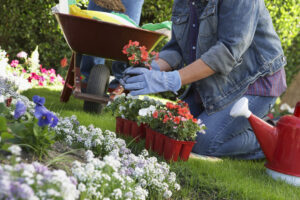 If you haven’t planted your annuals in pots yet, then consider planting in the ground instead.
If you haven’t planted your annuals in pots yet, then consider planting in the ground instead.
In general, annuals planted in the ground can survive on less frequent watering compared to those in pots due to the larger soil volume, better moisture retention, and stable growing environment. However, both types of planting have their own care requirements, and it’s important to adapt watering practices accordingly to ensure plant health.
5. Cover the Soil:
Place a light cloth or shade cloth over the pots during the hottest parts of the day. This can further reduce evaporation and keep the soil from heating up too much.
Ensure the cover allows air circulation to prevent overheating.
6. Repurpose Household Water:
Use “greywater” from your home (such as cooled cooking water, or water collected from rinsing vegetables) to keep your pots hydrated. Ensure this water is free from soaps, oils, and heavy salts.
Collect rainwater by placing pots under eaves or downspouts during rainfall events, which can provide some natural hydration.
For more information on using grey water, check out this article from Treehugger, “How to Use Grey Water in the Garden“.
Following are a few of the creative ideas that Treehugger suggests to save grey water indoors:
- Warm-up water: Put a container under the faucet to collect cold water while you wait for the water to heat up.
- Rinsing out wine and other bottles: If you rinse bottles before placing them in the recycle bin, pour the rinse water onto thirsty plants.
- Showers: Place a bucket in the shower to catch water as it warms up and while you shower.
- Dog bowls: When you’re freshening your pooch’s water, don’t pour water remaining in a partially filled bowl into a nearby sink. Pour it into a container for outdoor use instead.
7. Use Capillary Action:
Place the pots on a moist surface such as a thick, water-absorbent mat. This can allow the soil to absorb moisture from below through capillary action, keeping the root zone hydrated longer.
Alternatively, set the pots in a shallow tray with a small amount of water for a limited period, allowing the soil to wick up the moisture.
8. Reduce Plant Stress:
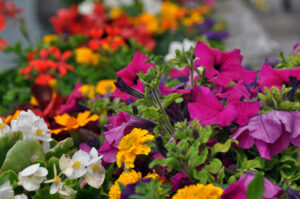 Trim any dead or excess foliage to reduce the plant’s water needs and focus its energy on surviving with limited resources.
Trim any dead or excess foliage to reduce the plant’s water needs and focus its energy on surviving with limited resources.
Avoid fertilizing during droughts, as this can increase the plants’ water requirements.
9. Pots Matter
The type of pot that you plant your plant in, can also help your plant retain moisture or allow for quick evaporation.
According to Homes and Gardens, “Terracotta is the worst culprit: if not sealed, it allows for quick evaporation, meaning plants will dry out much more quickly. Sealing this material with terracotta sealant will improve the situation.”
“Plants left in the black plastic containers you bought them in will suffer too – these will be best protected from heat by repotting into light-colored containers which reflect sunlight (and deflect heat) more effectively.”
10. Group Pots Together:
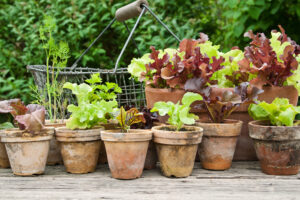
Cluster your pots closely together. Grouping creates a microenvironment with higher humidity around the plants, which helps reduce water loss.
If possible, place a large, water-filled container in the center of the group to increase humidity through slow evaporation.
11. Use Water-Absorbing Materials:
Incorporate water-absorbing crystals or gels into the soil. These materials can hold water for longer periods and slowly release it as the soil dries out.
Even though you can’t add water, the crystals will hold onto existing moisture for extended availability to the plants.
By implementing these strategies, you can help your annuals in pots survive the watering restrictions. These tips maximize the retention and use of existing moisture while protecting the plants from stress and excessive water loss.
Sources:
For further detailed information, explore these resources:
Homes and Gardens, “Protecting plants in a heatwave – 10 expert tips for combatting heat“
University of Minnesota Extension, “Fertilizing and watering container plants“
Treehugger, “How to Use Grey Water in the Garden“

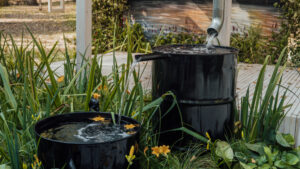
Recent Comments